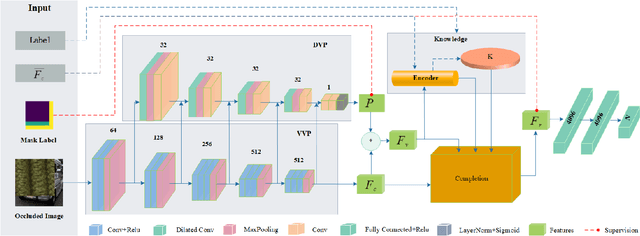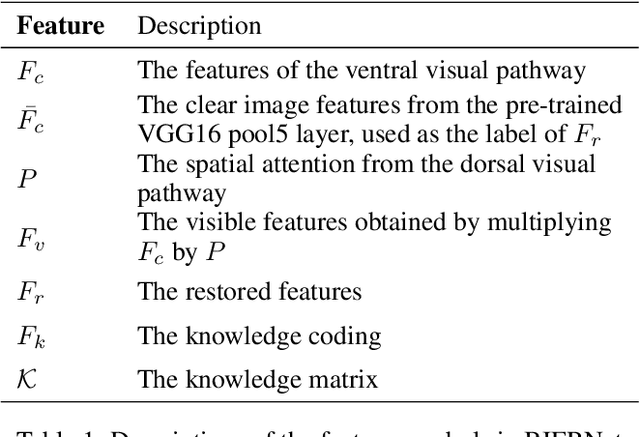BIFRNet: A Brain-Inspired Feature Restoration DNN for Partially Occluded Image Recognition
Paper and Code
Mar 16, 2023



The partially occluded image recognition (POIR) problem has been a challenge for artificial intelligence for a long time. A common strategy to handle the POIR problem is using the non-occluded features for classification. Unfortunately, this strategy will lose effectiveness when the image is severely occluded, since the visible parts can only provide limited information. Several studies in neuroscience reveal that feature restoration which fills in the occluded information and is called amodal completion is essential for human brains to recognize partially occluded images. However, feature restoration is commonly ignored by CNNs, which may be the reason why CNNs are ineffective for the POIR problem. Inspired by this, we propose a novel brain-inspired feature restoration network (BIFRNet) to solve the POIR problem. It mimics a ventral visual pathway to extract image features and a dorsal visual pathway to distinguish occluded and visible image regions. In addition, it also uses a knowledge module to store object prior knowledge and uses a completion module to restore occluded features based on visible features and prior knowledge. Thorough experiments on synthetic and real-world occluded image datasets show that BIFRNet outperforms the existing methods in solving the POIR problem. Especially for severely occluded images, BIRFRNet surpasses other methods by a large margin and is close to the human brain performance. Furthermore, the brain-inspired design makes BIFRNet more interpretable.
 Add to Chrome
Add to Chrome Add to Firefox
Add to Firefox Add to Edge
Add to Edge